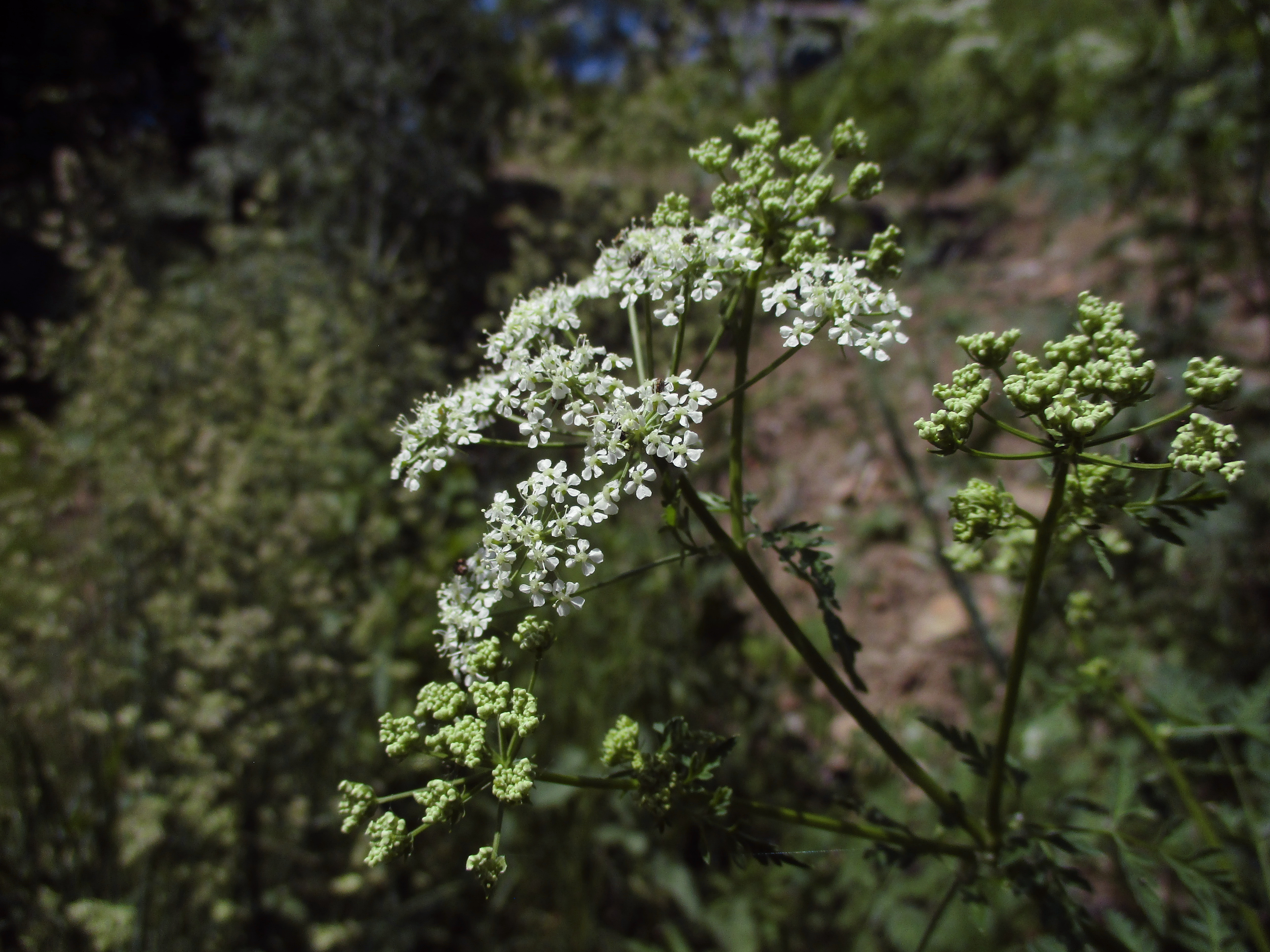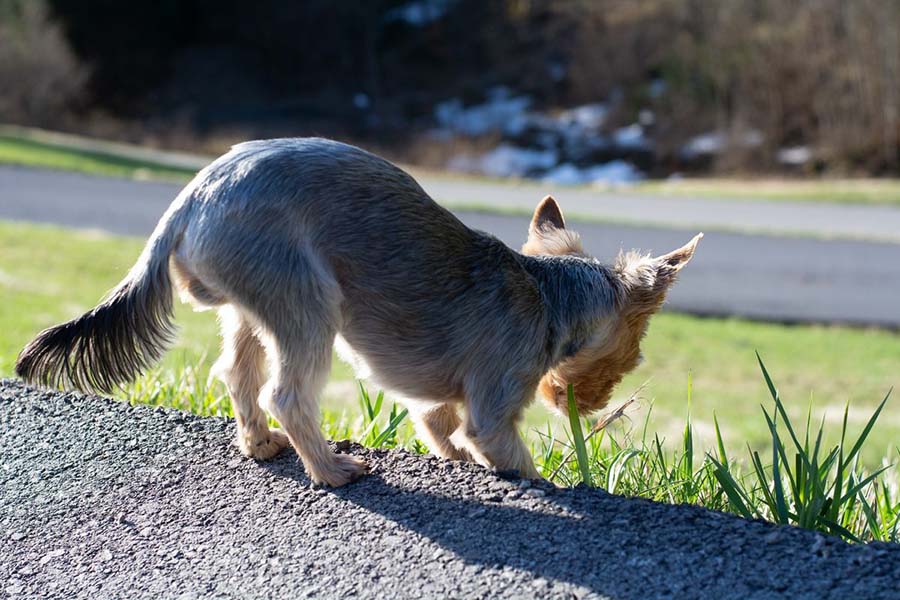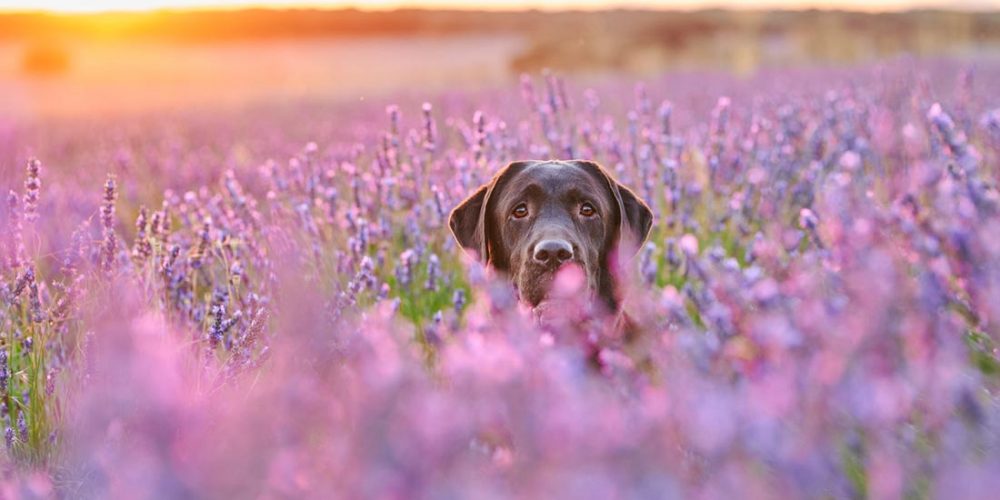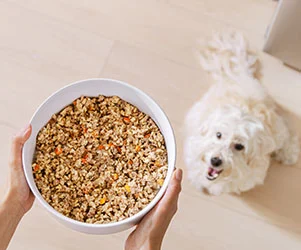Summary
Dogs are curious by nature—but many common houseplants and garden favorites can make them sick or even be fatal. Knowing which plants are toxic and what signs to look for can save your dog’s life.
Toxic plants for dogs include:
- Tulips, Daffodils, Hyacinths, Amaryllis
- Azalea, Rhododendron, Oleander
- Autumn Crocus, Lily of the Valley, Foxglove
- Sago Palm, Aloe Vera, English Ivy, Hydrangea
- Mistletoe, Yew, Rhubarb, Larkspur, Horse Chestnut
- Calla Lily, Peace Lily, Cyclamen, Dumb Cane, Elephant Ears, Philodendron
- Chrysanthemum, Geranium, Poinsettia
- Tomato plants (unripe fruit, leaves, stems), Apricot pits
- Asparagus Fern, Castor Bean, Chives, Hemlock
Symptoms range from vomiting, drooling, and abdominal pain to heart issues, seizures, or organ failure.
Even tiny amounts of some plants (like sago palm, oleander, lily of the valley, or foxglove) can be fatal.
If ingestion is suspected: call your vet immediately or contact the ASPCA Poison Control helpline at (888) 426-4435.
Safer alternatives include spider plants, Boston ferns, and bamboo palms.
Dogs are naturally curious creatures, and whether they’re exploring your garden, chewing on houseplants, or sniffing around a park, they don’t always know what’s safe and what isn’t.
Unfortunately, there are many toxic plants that can pose a serious risk to canine health. In fact, some of the most beautiful flowers and most common plants found in our homes and gardens can cause plant poisoning in dogs.
That’s why it’s critical for loving pet parents to understand which poisonous plants are the most dangerous, the symptoms of ingestion, and why immediate veterinary care is critical.
Why Can Plants Be Dangerous for Dogs?

While plants add beauty to homes and landscapes, many contain compounds like glycosides, alkaloids, or oxalates that can harm dogs when chewed or swallowed.
Even a small part of the plant, such as the bulb, leaves, or seeds, can cause reactions ranging from drooling and oral irritation to liver failure or life-threatening cardiac issues.
Toxic reactions vary based on the type of plant, the size of the dog, and whether large amounts were consumed. Symptoms may include:
- Abdominal pain
- Gastrointestinal upset (vomiting, diarrhea)
- Salivation and excessive drooling
- Lethargy or loss of appetite
- Low blood pressure or irregular heart rate
- Difficulty breathing
- In severe cases, seizures or organ failure
If your dog eats something you suspect to be toxic, call your vet immediately or contact the ASPCA Animal Poison Control helpline.
What are Some Common Poisonous Plants to Watch Out For?
Below is a list of common plants that are highly toxic to dogs, many of which are popular in homes and gardens.
Tulips (Tulipa)

Tulips are a popular spring flower, but their bulbs pose a real danger to dogs. The bulbs contain concentrated toxins that may cause gastrointestinal upset, including vomiting, diarrhea, and excessive drooling.
Affected dogs may also show lethargy and a loss of energy. Since dogs often enjoy digging in the garden, they may accidentally unearth and chew the bulbs, making them especially vulnerable to tulip poisoning.
Azalea and Rhododendron
Both azaleas and rhododendrons contain grayanotoxins, compounds that interfere with the normal function of the heart and digestive system. Even chewing on a small part of the plant can lead to severe toxicity.
Symptoms often include vomiting, diarrhea, low blood pressure, irregular heart rate, weakness, and collapse. Without prompt treatment, ingestion can be life-threatening, making these flowering shrubs among the most hazardous for dogs.
Daffodil (Narcissus)

Daffodils, another common spring bulb, are also highly toxic. The bulbs, in particular, contain alkaloids that trigger severe abdominal pain, vomiting, diarrhea, and salivation.
Ingesting large amounts may lead to more serious problems, including tremors, low blood pressure, and even seizures. Because their bulbs are often left in the soil during the offseason, curious dogs may encounter them while digging.
Autumn Crocus (Colchicum autumnale)
The autumn crocus is among the most dangerous plants for dogs. It contains colchicine, a powerful toxin that affects multiple organ systems. Ingestion can cause gastrointestinal upset, bloody vomiting, and diarrhea, followed by organ damage such as liver failure and kidney problems.
Over time, bone marrow suppression may occur, making it difficult for the body to produce new blood cells. Because poisoning from this plant is often life-threatening, immediate veterinary care is crucial.
Lily of the Valley
Though small and delicate, the lily of the valley is highly poisonous due to its concentration of cardiac glycosides.
Dogs that ingest it may experience vomiting, diarrhea, severe toxicity, difficulty breathing, an irregular heart rate, and seizures.
Even a tiny amount of this plant can be fatal, making it one of the most dangerous garden flowers for pets.
Oleander (Nerium oleander)

Oleander is well-known as a deadly plant for both humans and animals. Every part of the plant is toxic, containing powerful cardiac glycosides similar to those found in digitalis.
Dogs that ingest oleander may suffer from drooling, tremors, irregular heart rate, weakness, and sudden death in severe cases. Its widespread use as an ornamental shrub in warm climates makes it a constant risk to dogs.
Sago Palm
The sago palm, often used as an indoor ornamental plant, is extremely toxic. It contains cycasin, a compound that damages the liver and can quickly become fatal.
After ingestion, dogs may develop vomiting, diarrhea, loss of appetite, and eventually liver failure. Even a single seed can cause severe poisoning, making this one of the most dangerous household plants for dogs.
Aloe Vera
Aloe vera is often praised for its soothing effects on human burns and skin irritations, but for dogs it poses a hazard.
Ingesting the gel or leaves can cause oral irritation, abdominal pain, vomiting, and lethargy. While aloe may seem like a harmless houseplant, it’s important to keep it out of reach of curious pets.
English Ivy (Hedera helix)
English ivy, also known as Hedera helix, is a common climbing plant used both indoors and outdoors. Dogs that chew on the leaves or berries may experience salivation, vomiting, abdominal pain, and diarrhea. While the plant’s glossy leaves make it popular in landscaping, its toxicity to dogs makes it a dangerous choice for pet-friendly homes.
Foxglove

Foxglove is both strikingly beautiful and extremely deadly. It contains digitalis glycosides, which directly affect the heart.
Ingesting even small amounts can cause vomiting, weakness, irregular or slowed heart rate, and low blood pressure. Severe poisoning may lead to collapse or sudden death, classifying foxglove as one of the most life-threatening garden plants.
Hyacinth
Hyacinths, like tulips, are bulb plants with toxins concentrated in their underground structures. Dogs that dig up bulbs and chew on them may develop drooling, vomiting, and lethargy.
Ingesting large amounts can trigger tremors and nervous system disturbances. These fragrant spring flowers should be kept away from areas accessible to dogs.
Hydrangea
Hydrangeas contain cyanogenic glycosides, which release cyanide when metabolized. In dogs, ingestion can cause gastrointestinal upset, vomiting, diarrhea, excessive drooling, and depression.
While rarely fatal, hydrangea poisoning can make dogs very ill, especially if they chew multiple blooms or leaves.
Mistletoe
Both European and American mistletoe varieties are toxic to dogs. They contain compounds that affect the cardiovascular and nervous systems, leading to vomiting, diarrhea, abnormal heart rate, seizures, and difficulty breathing.
In severe cases, mistletoe ingestion may result in collapse or death. Because mistletoe is often used as a holiday decoration, it should always be placed well out of a pet’s reach.
Rhubarb
The leaves of the rhubarb plant contain oxalates, which are dangerous for dogs.
Chewing on the leaves can cause drooling, tremors, and abdominal pain, progressing to kidney damage or even life-threatening toxicity if untreated.
While the stalks are safe for humans to eat, they should never be given to pets.
Yew (Taxus)
Yew trees and shrubs contain highly toxic compounds in their seeds and needles. Dogs that ingest them may suffer tremors, collapse, irregular heart rate, or sudden death.
Because yews are often planted in landscapes, they represent a silent but deadly risk to dogs who might chew on their greenery.
Amaryllis
Amaryllis plants, often gifted during the holiday season, pose a risk to pets. Ingesting the bulbs, leaves, or flowers can cause drooling, vomiting, diarrhea, and lethargy.
While fatalities are rare, the symptoms can be distressing and require veterinary care to prevent complications.
Calla Lily and Peace Lily
Both calla lilies and peace lilies contain insoluble calcium oxalates. When chewed, they release crystals that embed in the tissues of the mouth and throat, causing intense oral irritation, salivation, and pawing at the mouth. In severe cases, swelling may lead to difficulty breathing, which could become a medical emergency.
Chrysanthemum

Chrysanthemums contain pyrethrins, compounds also used in insecticides. In dogs, ingestion can lead to gastrointestinal upset, excessive drooling, and loss of appetite.
While not typically fatal, the effects are unpleasant and may require treatment to prevent dehydration and secondary complications.
Cyclamen
Cyclamen is especially dangerous because its tuber roots are highly toxic. Dogs that chew on the plant may suffer from intense vomiting, seizures, and potentially fatal heart complications.
Because cyclamen is often used as a decorative indoor plant, owners should keep it out of reach of curious pets.
Dumb Cane (Dieffenbachia) and Elephant Ears

These popular houseplants contain insoluble oxalates, which cause immediate pain and oral irritation if chewed.
Dogs may exhibit excessive drooling, swelling of the mouth and throat, and difficulty breathing. While rarely fatal, these symptoms can be severe and require prompt care to ease discomfort.
Geranium
Geraniums can irritate a dog’s digestive system, leading to vomiting, diarrhea, and loss of appetite. Some dogs may also develop skin irritation after contact with the plant. While less toxic than some other species, ingestion can still make pets quite ill.
Poinsettias
Poinsettias have long been considered deadly, but in truth, their toxicity is relatively mild. Dogs that chew on poinsettia leaves may experience oral irritation, vomiting, and drooling, but the symptoms are usually self-limiting. Still, the discomfort they cause makes it best to keep them away from pets.
Tomato Plants (Nightshade Family)
Tomato plants belong to the nightshade family and contain solanine, a compound that can harm dogs.
While ripe tomatoes are generally safe in small amounts, green fruit, stems, and leaves are toxic. Dogs that ingest these parts may show vomiting, lethargy, tremors, and weakness.
Apricot Pits
Apricot seeds contain cyanide, which is dangerous for both dogs and humans. In dogs, ingestion can lead to difficulty breathing, shock, and death if not treated quickly.
While the flesh of the fruit is safe in small amounts, the pit should always be removed and kept out of reach.
Asparagus Fern

The asparagus fern, sometimes kept as a decorative houseplant, can irritate the skin and digestive system.
Dogs that chew on it may develop rashes, vomiting, and diarrhea. While rarely fatal, it can make dogs uncomfortable and unwell.
Castor Bean
Perhaps one of the most dangerous plants on this list, the castor bean contains ricin, a toxin known for its potency.
Even a small amount can cause severe abdominal pain, vomiting, excessive drooling, tremors, and death. Because of its extreme toxicity, castor bean should never be planted where pets roam.
Chives
Chives belong to the allium family, alongside onions and garlic, all of which are toxic to dogs. Ingesting them can cause gastrointestinal upset, anemia, and, in large amounts, potentially life-threatening conditions.
Dogs should never be fed foods seasoned with chives or allowed access to garden plants.
Hemlock

Hemlock is infamous throughout history for its deadly effects, and dogs are equally vulnerable. Ingestion can cause tremors, paralysis, and respiratory failure, often progressing rapidly.
Because wild hemlock resembles other harmless plants, dog owners should be vigilant during walks in rural areas.
Horse Chestnut
Horse chestnuts contain compounds that irritate the digestive system. Dogs that chew on them may suffer vomiting, diarrhea, tremors, and loss of appetite.
While fatalities are rare, the unpleasant effects are enough to make them dangerous plants for pets.
Larkspur
Larkspur contains alkaloids that affect the nervous system. In dogs, ingestion may cause weakness, tremors, seizures, and heart problems.
The severity often depends on how much is consumed, but even small amounts can cause distressing symptoms.
Philodendron
Philodendrons are one of the most common household plants, but they are toxic to dogs.
Chewing on the leaves can release oxalate crystals that cause oral irritation, swelling, excessive salivation, and pawing at the mouth.
While rarely fatal, the intense discomfort makes it unsafe to keep around curious pets.
Which Dangerous Houseplants Should Be Removed?

Many of the plants above double as houseplants, like philodendron, peace lily, dumb cane, and poinsettia. Others, like aloe vera, may seem harmless because of their beneficial human uses, but they’re still considered dangerous plants for dogs.
When in doubt, it’s safest to choose pet-friendly alternatives. If you enjoy greenery indoors, consider non-toxic options like spider plants, Boston ferns, or bamboo palms.
What Should You Do If Your Dog Eats a Poisonous Plant?

If your dog eats any part of a known toxic plant, it is critical not to wait for symptoms such as drooling, abdominal pain, or difficulty breathing to appear before taking action.
The first step is to call your veterinarian right away for guidance. If your vet is not available, you should immediately contact the ASPCA Poison Control helpline for professional advice.
It is important not to induce vomiting unless you are specifically instructed to do so, as this can sometimes make the situation worse depending on the type of plant ingested.
When seeking help, be prepared to provide key details such as the name of the plant, the amount your dog consumed, and which part of the plant was ingested. Acting quickly and securing prompt veterinary care can be the difference between a safe recovery and a life-threatening emergency.
How Can You Keep Your Dog Safe from Toxicity?

The best way to protect dogs from the dangers of poisonous plants is through prevention. Pet owners should take time to learn how to recognize common plants that are dangerous and avoid planting them in their yards or keeping them inside their homes.
Dogs should be closely supervised in gardens, parks, or wooded areas where hazardous plants such as nightshade or hemlock might grow naturally. Inside the home, it is wise to replace household plants with pet-safe alternatives that pose no risk if chewed or swallowed.
Education also plays a key role in prevention; family members, visitors, and even pet sitters should be aware of which plants are harmful so that no one accidentally leaves toxic greenery within reach.
By being proactive and mindful of these risks, owners can create a safe environment that keeps their dogs healthy and out of danger.
Final Thoughts
While many plants brighten our homes and gardens, it’s important to remember that some of the most beautiful blooms are also the most harmful to our pets. From tulips and daffodils to oleander, sago palm, and lily of the valley, the list of dangerous plants is long.
Even seemingly harmless houseplants like aloe vera or poinsettias can cause oral irritation, salivation, and gastrointestinal upset.
Knowing which poisonous plants to avoid and acting quickly if ingestion occurs can help protect your dog from severe toxicity. When in doubt, always seek immediate veterinary care and rely on trusted resources like the ASPCA helpline.
Our furry friends depend on us to keep them safe. By being proactive, you can ensure your dog avoids the dangers of plant poisoning and continues to live a happy, healthy life.
This content is for informational use only and does not replace professional nutrition and/or medical advice, diagnosis, or treatment. It is not a substitute for and should not be relied upon for specific nutrition and/or medical recommendations. Please talk with your veterinarian about any questions or concerns.
Sources
“Do You Know Which Flowers and Plants Are Toxic to Pets? Our Experts Explain! | ASPCA.” n.d. Www.aspca.org. https://www.aspca.org/news/do-you-know-which-flowers-and-plants-are-toxic-pets-our-experts-explain.
“Plants Toxic to Dogs.” 2025. Cornell University College of Veterinary Medicine. 2025. https://www.vet.cornell.edu/departments-centers-and-institutes/riney-canine-health-center/canine-health-information/plants-toxic-dogs.
Siroka, Zuzana. 2023. “Toxicity of House Plants to Pet Animals.” Toxins 15 (5): 346. https://doi.org/10.3390/toxins15050346.
Schaible, Laci. 2019. “Are Lilies Poisonous to Dogs?” Petmd.com. PetMD. June 17, 2019. https://www.petmd.com/dog/conditions/toxicity/are-lilies-poisonous-dogs.
Rehman, Rameez, and Ofek Hai. 2023. “Digitalis Toxicity.” NIH.GOV. StatPearls Publishing. 2023. https://www.ncbi.nlm.nih.gov/books/NBK459165/.
“Sago Palm Poisoning.” n.d. Vca_corporate. https://vcahospitals.com/know-your-pet/sago-palm-poisoning.
“Aloe Vera Is Toxic to Dogs.” n.d. Pet Poison Helpline. https://www.petpoisonhelpline.com/poison/aloe-vera/.
storey. 2023. “English Ivy – American College of Veterinary Pharmacists.” American College of Veterinary Pharmacists. April 25, 2023. https://vetmeds.org/pet-poison-control-list/english-ivy/#.
Plants, Toxic. 2021. “Doncaster Veterinary Hospital.” Doncaster Veterinary Hospital. July 29, 2021. https://www.doncastervet.com.au/pet-advice/10-toxic-plants-to-keep-away-from-your-pets.





